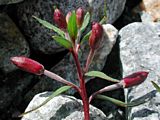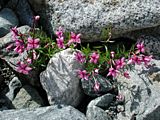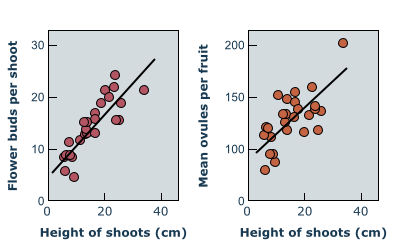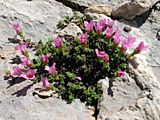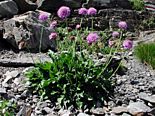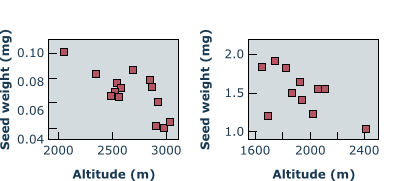Why so many abortions of flowers and seeds?
Size dependency
Most wild plants abort many of their flowers and immature fruits. Similarly, within fruits only a fraction of ovules develop into mature seeds. Evolutionary considerations explain the role of "surplus" reproductive structures:
- "Surplus" reproductive structures could provide a reserve in case of losses due to unpredictable environmental stress, predation, or disease and allow fruit and seed production to be adjusted to fluctuations in resource levels.
- Selective abortions of fruits and ovules could improve offspring quality.
- Extra flowers could have a role in pollinator attraction or for male contribution to fitness (only rarely considered in reproductive studies of plants).
Adjustments to available resources play a crucial role in the abortion pattern of surplus flowers and ovules. Under alpine conditions this is particularly obvious. Particularly smaller plants are often not able to realize the potential of their reproductive structures (see Fig. 3 and 4).
Environmental control of abortions
At high altitudes time for fruit and seed maturation is short, but low temperatures affect histogenesis. Seeds of alpine sedges ( Carex curvula, C. firma, Cyperaceae) matured within 6-8 weeks at lowland conditions instead of 7-10 weeks at high altitudes (Wagner and Reichegger 1997).
- Conditions at high altitudes may limit seed development.
- Early snow may even exclude seed ripening completely.
Seed to ovule ratio in outcrossing perennials is usually only between 0.4 and 0.7. Cold and other stressful conditions, i.e. dry soils as in the exceptional summer 2003 may cause increased seed abortions. Kudo and Molau (1999) observed a significant increase of aborted seeds at alpine compared to lowland sites in the legume Astragalus alpinus (Fabaceae).
- The upper limit of a species range appears frequently to be a limit of the capacity to produce viable seeds.
Size controls flower and ovule numbers
Short season and cold conditions lower seed size
It is the endosperm tissue which requires the longest formation time and which account for most of the final seed volume. Consequently, low temperature may affect final seed size, seed quality and germination success. Several studies reported a selection pressure for larger seeds with increasing altitudes because large seeds have a better chance of giving rise to established plants in stressful conditions.
- Environmental conditions may cause seed size within a species to decrease considerably with altitude (see Fig. 8).
